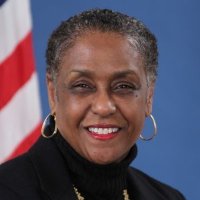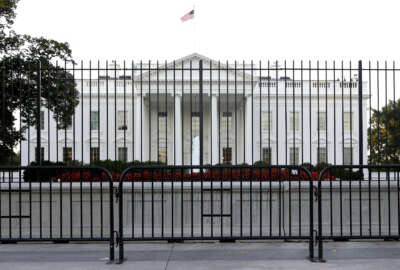
Presidential transition could bring ‘significant turnover’ of career SES
The National Academy of Public Administration has been holding panel discussions to come up with ideas for the next administration to hit the ground running.

The federal workforce “retirement tsunami,” first predicted in the late 1990s, still hasn’t happened. But Ron Sanders, a member of the National Academy of Public Administration’s human capital discussion group, says agencies should expect to see “a fairly significant turnover at the top leadership level” around the upcoming presidential transition.
“My sense is, in just talking to career execs, that either before, during or after transition, now is the time,” Sanders, former chief human capital officer at the Office of the Director of National Intelligence, told the Federal Drive with Tom Temin. “They’re not willing to commit another two, three or four years to a new administration, regardless of who wins. So I think we’re looking at a fairly substantial turnover both at the political level and at the career level.”
Sanders said the NAPA panel, which is working on ways to facilitate a smoother transition for senior executives, is concerned not only with filling those positions, but also getting them primed on the issues.
Career positions are filled from within the career ranks when someone leaves, he said, and the Transition Act of 2015 established an order of succession, so agencies always know who is next in line. That takes care of short-term continuity, which is why the concern is shifting to medium-to-long-term continuity.
“For most of these top jobs, you need somebody who’s got the background, the experience, the qualifications to do it,” Sander said.
These cabinet and agency leader positions are hugely complex, he said, and having the right appointees in the right places is important. That’s especially true considering fiscal planning happens two years in advance, so they’re behind from the moment they arrive.
Sanders said most of the issues the panel is working on involve senior leadership and human capital challenges, including senior executive accountability.
“We all know that’s code for being able to fire executives more easily, and like it or not, that’s a hot topic these days,” he said.
Another issue the panel has focused on recently is the cybersecurity “brain drain,” wherein the government is struggling to compete with the private sector in hiring cyber talent.
Sponsored Content: How secure is your network? Share your opinions in a Federal News Radio survey.
“That’s not something that makes the headlines unless there’s a breach, and then everybody worries about it,” Sanders said. But “OPM and OMB have done a good job starting a cyber talent strategy for the federal government. This is one of those things where the new administration needs to pick up the baton and run with it.”
The new administration should also be aware of the Veterans Affairs Department, especially the human capital issues, which Sanders said may be key. He specifically noted the recent Commission on Care’s position that VA health care employees should move to Title 38.
“The general schedule is woefully obsolete, and VA is a case where you see the evidence of it in the difficulty they’re had hiring and keeping nurses and doctors,” he said.
Sanders said that in general, senior executives need to be more aware of and help push forward on subjects such as these that are of a human capital nature, “but not necessarily in the purview of a CHCO.”
Political appointees, especially those stepping into struggling agencies, should try to establish a relationship with career executives, who are more aware of developing issues and generally want what’s good for the department.
“It usually takes an appointee new to government a year, year-and-a-half, two years before he or she realizes, ‘Hey, wait a minute, my career staff is on my side,’” Sander said.
He said senior leaders need to take a closer look at the Federal Employee Viewpoint Survey, not just the CHCOs. A more engaged workforce will give better results. That’s leadership 101, he said, although it’s easier said than done.
“The federal government’s workforce is off the charts when it comes to commitment to mission, and that’s something the new administration could really leverage in hitting the ground running,” Sanders said.
Copyright © 2025 Federal News Network. All rights reserved. This website is not intended for users located within the European Economic Area.
Daisy Thornton is Federal News Network’s digital managing editor. In addition to her editing responsibilities, she covers federal management, workforce and technology issues. She is also the commentary editor; email her your letters to the editor and pitches for contributed bylines.
Follow @dthorntonWFED





